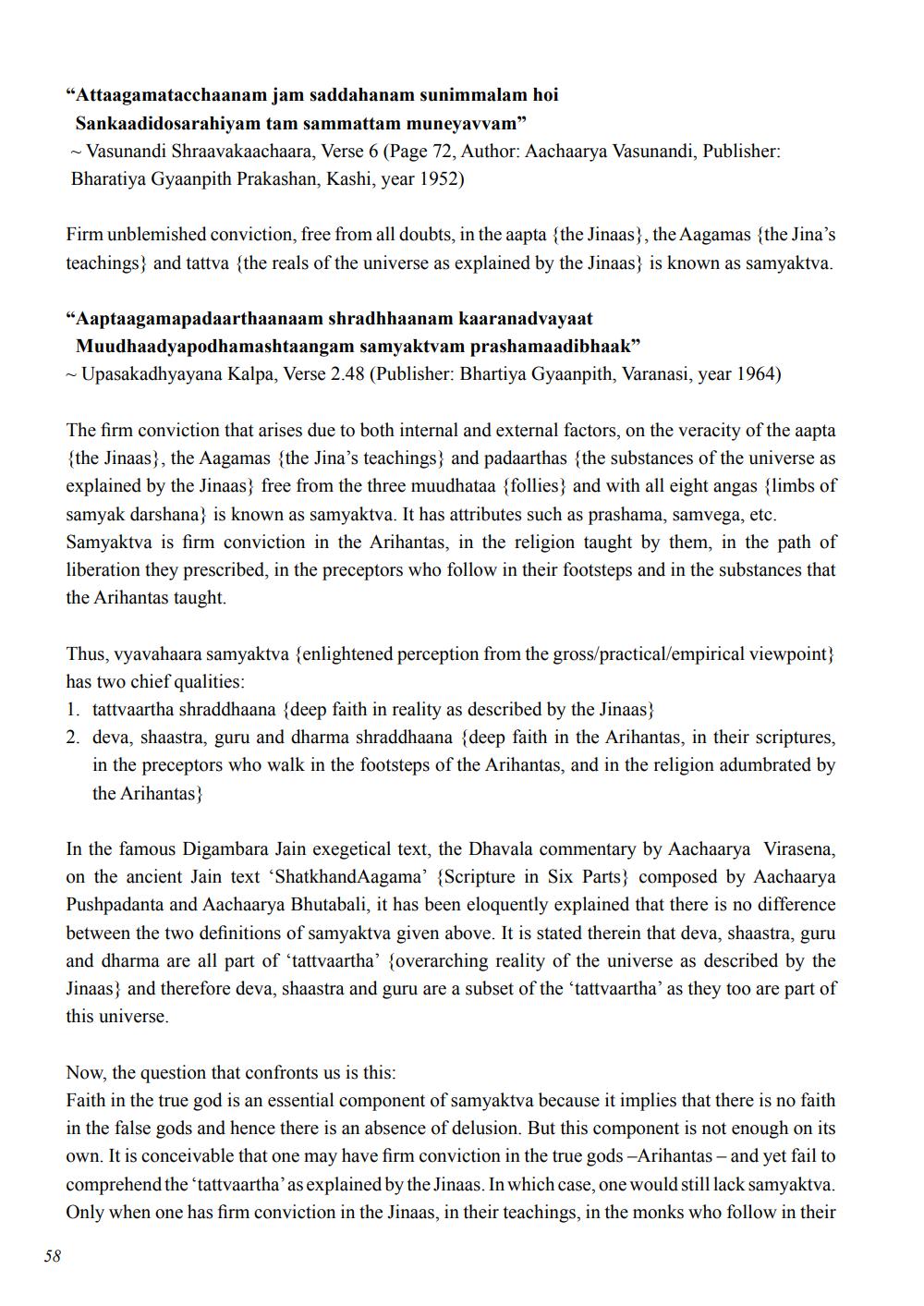________________
"Attaagamatacchaanam jam saddahanam sunim malam hoi Sankaadidosarahiyam tam sammattam muneyavvam" - Vasunandi Shraavakaachaara, Verse 6 (Page 72, Author: Aachaarya Vasunandi, Publisher: Bharatiya Gyaanpith Prakashan, Kashi, year 1952)
Firm unblemished conviction, free from all doubts, in the aapta {the Jinaas), the Aagamas (the Jina's teachings and tattva (the reals of the universe as explained by the Jinaas) is known as samyaktva.
"Aaptaagamapadaarthaanaam shradhhaanam kaaranadvayaat
Muudhaadyapodhamashtaangam samyaktvam prashamaadibhaak” - Upasakadhyayana Kalpa, Verse 2.48 (Publisher: Bhartiya Gyaanpith, Varanasi, year 1964)
The firm conviction that arises due to both internal and external factors, on the veracity of the aapta {the Jinaas), the Aagamas <the Jina's teachings and padaarthas the substances of the universe as explained by the Jinaas free from the three muudhataa {follies and with all eight angas (limbs of samyak darshana) is known as samyaktva. It has attributes such as prashama, samvega, etc. Samyaktva is firm conviction in the Arihantas, in the religion taught by them, in the path of liberation they prescribed, in the preceptors who follow in their footsteps and in the substances that the Arihantas taught.
Thus, vyavahaara samyaktva (enlightened perception from the gross/practical/empirical viewpoint has two chief qualities: 1. tattvaartha shraddhaana {deep faith in reality as described by the Jinaas 2. deva, shaastra, guru and dharma shraddhaana {deep faith in the Arihantas, in their scriptures,
in the preceptors who walk in the footsteps of the Arihantas, and in the religion adumbrated by the Arihantas
In the famous Digambara Jain exegetical text, the Dhavala commentary by Aachaarya Virasena, on the ancient Jain text 'ShatkhandAagama' {Scripture in Six Parts composed by Aachaarya Pushpadanta and Aachaarya Bhutabali, it has been eloquently explained that there is no difference between the two definitions of samyaktva given above. It is stated therein that deva, shaastra, guru and dharma are all part of 'tattvaartha' (overarching reality of the universe as described by the Jinaas) and therefore deva, shaastra and guru are a subset of the 'tattvaartha' as they too are part of this universe.
Now, the question that confronts us is this: Faith in the true god is an essential component of samyaktva because it implies that there is no faith in the false gods and hence there is an absence of delusion. But this component is not enough on its own. It is conceivable that one may have firm conviction in the true gods -Arihantas - and yet fail to comprehend the 'tattvaartha'as explained by the Jinaas. In which case, one would still lack samyaktva. Only when one has firm conviction in the Jinaas, in their teachings, in the monks who follow in their
58




